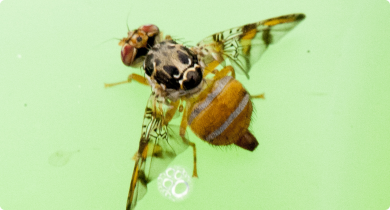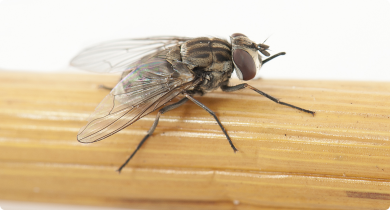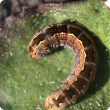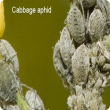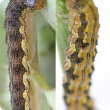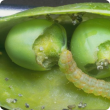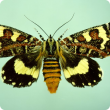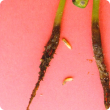Pest insects
Pest insects can have adverse and damaging impacts on agricultural production and market access, the natural environment, and our lifestyle. Pest insects may cause problems by damaging crops and food production, parasitising livestock, or being a nuisance and health hazard to humans.
Western Australia is free from some of the world's major pest insects. Biosecurity measures on your property are vital in preventing the spread of insects.
The Department of Primary Industries and Regional Development provides:
- biosecurity/quarantine measures at the WA border to prevent the entry of pest insects
- where relevant post border biosecurity measures
- advice on widespread pest insects present in the state.
For advice on pest insects search our website, the Western Australian Organism List or contact our Pest and Disease Information Service (PaDIS).
For diagnostic services, please contact our Diagnostic Laboratory Services.
Filter by search
Filter by topic
- (-) Remove Crops filter Crops
- Horticulture (67) Apply Horticulture filter
- Grains (42) Apply Grains filter
- Fruit (33) Apply Fruit filter
- Vegetables (28) Apply Vegetables filter
- Canola (18) Apply Canola filter
- Biosecurity & quarantine (18) Apply Biosecurity & quarantine filter
- Potatoes (17) Apply Potatoes filter
- Biosecurity (15) Apply Biosecurity filter
- Plant biosecurity (14) Apply Plant biosecurity filter
- Cabbage (11) Apply Cabbage filter
- Pome fruit (10) Apply Pome fruit filter
- Citrus (9) Apply Citrus filter
- Lupins (8) Apply Lupins filter
- Diseases (8) Apply Diseases filter
- Grapes & wine (8) Apply Grapes & wine filter
- Stone fruit (7) Apply Stone fruit filter
- Grains research & development (7) Apply Grains research & development filter
- Crop diseases (6) Apply Crop diseases filter
- Wheat (5) Apply Wheat filter
- Nursery & cutflowers (5) Apply Nursery & cutflowers filter
- Barley (5) Apply Barley filter
- Pulses (4) Apply Pulses filter
- Quarantine (4) Apply Quarantine filter
- Control methods (4) Apply Control methods filter
- New horticulture crops (4) Apply New horticulture crops filter
- Cauliflower (4) Apply Cauliflower filter
- Olives (3) Apply Olives filter
- Insecticides (3) Apply Insecticides filter
- Weeds (3) Apply Weeds filter
- Emergency response (3) Apply Emergency response filter
- Production & postharvest (3) Apply Production & postharvest filter
- Chinese cabbage (3) Apply Chinese cabbage filter
- Broccoli (3) Apply Broccoli filter
- Agricultural emergency response (3) Apply Agricultural emergency response filter
- Chemicals (3) Apply Chemicals filter
- Brussels sprouts (3) Apply Brussels sprouts filter
- Kale (2) Apply Kale filter
- Mangoes (2) Apply Mangoes filter
- Minor fruits (2) Apply Minor fruits filter
- Intrastate movement (2) Apply Intrastate movement filter
- Nematodes (2) Apply Nematodes filter
- Climate, land & water (2) Apply Climate, land & water filter
- Biosecurity and Agriculture Management Act (2) Apply Biosecurity and Agriculture Management Act filter
- Biosecurity governance (2) Apply Biosecurity governance filter
- Crop weeds (2) Apply Crop weeds filter
- Field peas (2) Apply Field peas filter


